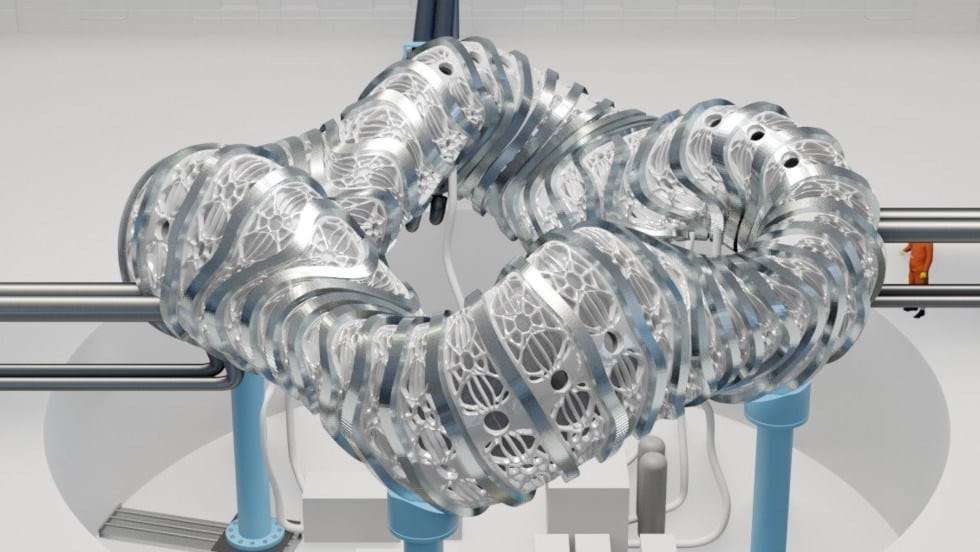Type One Energy to build stellarator prototype with plans to commercialise fusion energy

A STELLARATOR fusion pilot plant has been earmarked for construction at a former coal-fired power station in Tennessee, US, potentially pushing fusion energy closer to commercialisation.
Fusion energy firm Type One Energy plans to build its stellarator prototype, Infinity One, at the Bull Run Fossil Plant, which halted operations in December.
The “second generation” facility will look to build on the previous success of stellarator-backed fusion trials, with a wider focus on developing the environment required for sustaining fusion power.
Type One Energy is working with Oak Ridge National Laboratory (ORNL) on the project to further the firm’s FusionDirect technology programme.
Mickey Wade, an associate laboratory director at the fusion and fission energy and science directorate at ORNL, said the “substantial progress” that has been made in the field provided a fantastic platform.
“What scientists have learned about the physics of what governs the performance of stellarators has resulted in substantial progress in recent years, demonstrated by record performance achieved in the Wendelstein 7-X stellarator in Germany.”
Wade added that Type One Energy’s stellarator will be a risk reduction facility. Type One Energy expects construction of Infinity One to begin in 2025 and intends to make fusion power commercial over the next decade.
The current state of fusion
Fusion firms and initiatives around the world have already found experimental success with tokamaks. Tokamaks use magnetic coils to create three magnetic fields inside the reactor that control and shape plasma into a torus shape. The fields keep the plasma in constant motion to ensure the atoms in the plasma do not escape.
One of the longest-running tokamak experiments, the Joint European Torus (JET) plant, produced a world record for energy output in its final experiments before being decommissioned last year.
Operated by the Culham Centre for Fusion Energy, JET consistently produced power for five seconds, producing an output of 69 MJ. The plant is now undergoing a 16-year decommissioning process after operating for 40 years.
The UK Atomic Energy Authority (UKAEA) is currently developing its Spherical Tokamak for Energy Production (STEP) prototype fusion energy plant in North Nottinghamshire. The agency expects the plant to begin producing electricity for the National Grid in the 2040s.
The age of the stellarator
In contrast to tokamaks, stellarators use external coils to generate a twisting magnetic field to control the plasma.
Operational tokamaks outstrip stellarators five to one which, according to a study of the two, may be down to the technical simplicity of constructing tokamaks. However, the study found that stellarators could be more attractive for fusion power due to their steadier handling of plasma. Stellarators also require less energy input to sustain plasma.
One of the most advanced experimental stellarators in the world is the Wendelstein 7-X (W7-X) at the Max Planck Institute for Plasma Physics in Germany. Last year, operators of W7-X achieved an energy turnover of 1.3 GJ and maintained the plasma for eight minutes.
W7-X is currently under maintenance and set to resume experimental operations in the middle of the year. The institute expects W7-X to generate plasmas that are stable for half an hour. The plant is purely experimental, however, and is only focused on developing plasma management.
Can stellarators be the answer to fusion’s commercial viability?
Fusion funding has been plentiful in the last couple of years, with the UK unveiling a £650m package for its Fusion Futures Programme in October, and the US Department for Energy (DOE) providing US$46m of funding to eight companies to advance the commercialisation of fusion power, of which Type One Energy is a beneficiary.
Funded by Tennessee governor Bill Lee’s Nuclear Energy Fund, the project will look to verify design features of the stellarator and build on technologies currently under research, which includes improving configuration and confinement of plasma.
However, the primary technological advancement needed for the Type One Energy facility is to develop high-temperature superconducting (HTS) magnets. These can carry over 200 times the current carrying capacity of copper wires and “are now the focus of multiple companies working to adapt the basic technology for fusion energy applications”, according to Wade who is already looking beyond the prototype.
He said: “If successful, the results from the Type One Energy facility would provide a solid basis for a second-generation facility focused on energy production.”
Recent Editions
Catch up on the latest news, views and jobs from The Chemical Engineer. Below are the four latest issues. View a wider selection of the archive from within the Magazine section of this site.




